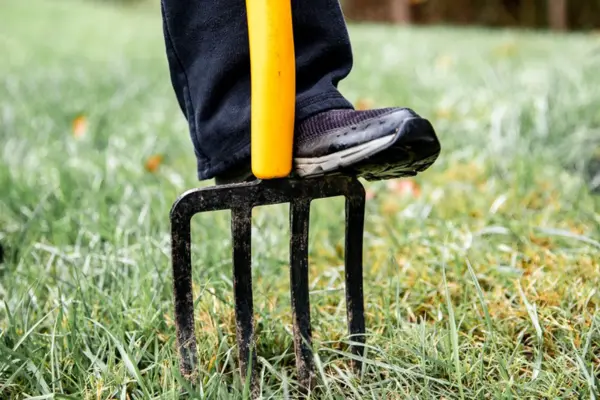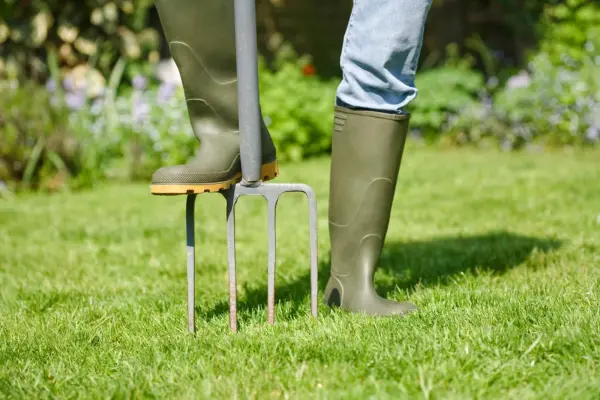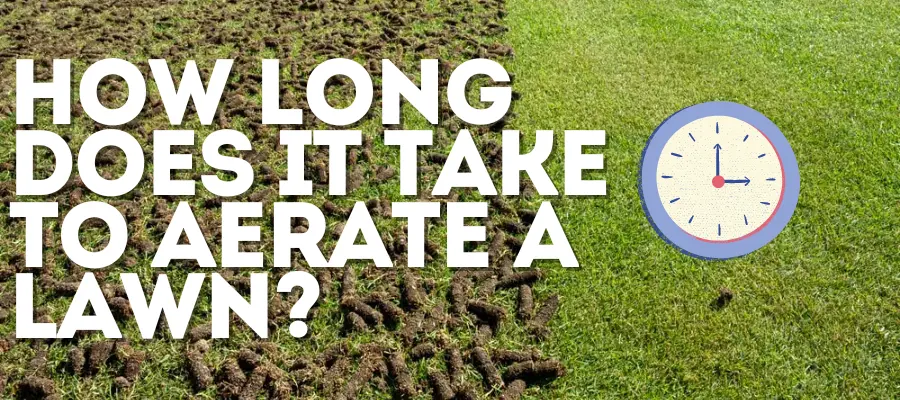Lawn aeration is a vital process for keeping your lawn lush and healthy. Whether you’re aiming to boost your lawn’s health or prepare it for new growth, understanding the aeration process can make a significant difference. This is especially true when considering when to aerate your lawn , where specific timing can impact the effectiveness of your efforts.
This article will discuss how long does it take to aerate a lawn, provide detailed preparation and execution steps, and explain what you need to do before and after aeration. By the end, you’ll be well-equipped to handle lawn aeration like a pro, tailored to your regional needs.
How Long Does It Take to Aerate a Lawn?

Several factors influence how long it takes to aerate a lawn effectively:
Size of the Lawn: Larger lawns naturally take more time. For example, a 10,000 square foot lawn might take around 5-6 hours with a core aerator, including setup and cleanup.
Type of Aerator Used: The efficiency of the aerator impacts the time required. Powered aerators are faster but can be costly to rent. Manual and spike aerators are slower but more affordable.
Soil Condition and Lawn Health: If the soil is heavily compacted or the lawn has a thick layer of thatch, you may need to make multiple passes or take extra time to ensure thorough aeration.
Estimated Time for Different Lawn Sizes
To give you a clearer picture, here’s a detailed estimate of the time required for different lawn sizes:
| Lawn Size | Estimated Time | Aerator Type |
|---|---|---|
| Small (Up to 1,000 sq ft) | 30-60 minutes | Manual Core Aerator |
| Medium (1,000 – 5,000 sq ft) | 1.5-3 hours | Tow-Behind Core Aerator |
| Large (Over 5,000 sq ft) | 3-6 hours | Powered Core Aerator |
Example Scenarios:
Scenario 1: For a 2,000 square foot lawn, using a manual core aerator might take about 1.5-2 hours. This includes time for adjusting the aerator, making multiple passes, and handling the soil plugs.
Scenario 2: A professional service using a powered aerator on a 4,000 square foot lawn could complete the task in approximately 1.5 hours. The efficiency of the equipment and professional expertise streamline the process.
What to Do Before Aerating Your Lawn

Preparing Your Lawn
Proper preparation is crucial for effective aeration. Follow these steps to ensure optimal results:
Mow the Lawn: Cut the grass to a height of about 2-3 inches. This helps the aerator penetrate the soil more easily and reduces the amount of grass that gets tangled in the machine.
Water the Lawn: Ensure the soil is moist but not saturated. Watering the lawn a day or two before aeration helps soften the soil, making it easier for the aerator to remove soil plugs.
Remove Obstacles and Debris: Clear the lawn of any debris, such as sticks, rocks, or pet waste. These can obstruct the aerator and damage the equipment or your lawn.
Checking Soil Conditions
Before starting the aeration process, assess the soil condition:
Test Soil Compaction Levels: Use a soil probe or core sampler to check compaction levels. If the soil is hard and compacted, aeration will be more beneficial.
Optimal Soil Moisture: The soil should be damp enough to allow the aerator to work effectively but not so wet that it becomes muddy. Aim for a soil moisture level similar to that of a wrung-out sponge.
Choosing the Right Aerator
Selecting the appropriate aerator depends on your lawn’s size and condition:
Manual Core Aerators: Best for small lawns or areas with minor compaction. They are affordable but require physical effort.
Tow-Behind Core Aerators: Suitable for medium to large lawns. They attach to a riding mower and can cover larger areas more quickly.
Powered Core Aerators: Ideal for large lawns or severe compaction. They offer the fastest and most efficient aeration but come with higher rental or purchase costs.
What to Do After You Aerate Your Lawn
Post-Aeration Lawn Care
Proper care after aeration is essential to maximize the benefits:
Watering Recommendations: Water the lawn thoroughly after aeration to help soil plugs break down and encourage new root growth. Continue to water regularly, ensuring the soil remains moist but not waterlogged.
Applying Fertilizer and Soil Amendments: Aeration creates opportunities for better nutrient absorption. Apply a balanced fertilizer or soil amendments to support lawn recovery and growth.
Seeding and Overseeding Options: Consider seeding or overseeding to fill in any bare spots and enhance lawn density. The aeration holes provide excellent conditions for seeds to germinate.
Monitoring Lawn Recovery
Keep an eye on your lawn’s progress after aeration:
Signs of Successful Aeration: Look for improved grass growth, deeper green color, and reduced compaction.
Common Issues: If you notice problems such as uneven growth or persistent compaction, you may need to repeat the aeration process or consult a lawn care professional.
Conclusion
Understanding how long it takes to aerate a lawn helps in planning and execution. Proper preparation, choosing the right aerator, and following up with appropriate care are key to successful aeration. With this guide, you’re equipped to ensure your lawn gets the aeration it needs for optimal health and growth.

